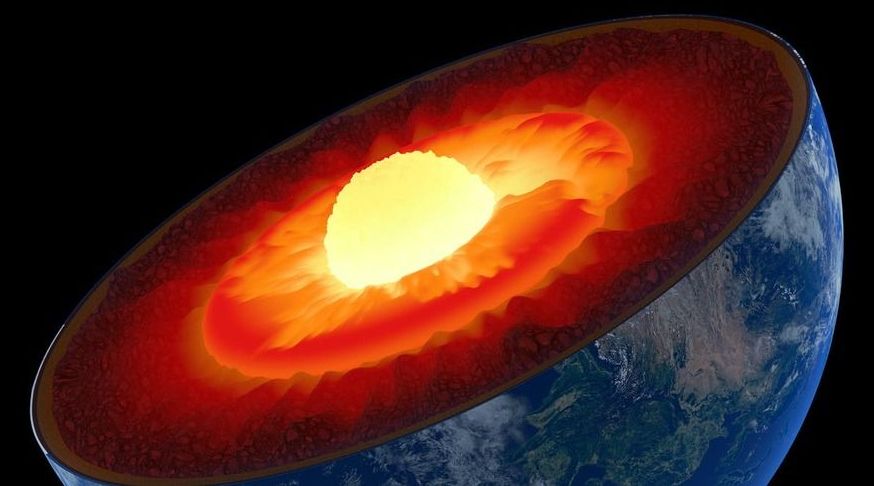Earth’s core was formed very early in our planet’s 4.5 billion-year history, within the first 200 million years. Gravity pulled the heavier iron to the centre of the young planet, leaving the rocky, silicate minerals to make up the mantle and crust.
Earth’s formation captured a lot of heat within the planet. The loss of this heat, and heating by ongoing radioactive decay, have since driven our planet’s evolution. Heat loss in Earth’s interior drives the vigorous flow in the liquid iron outer core, which creates Earth’s magnetic field. Meanwhile, cooling within Earth’s deep interior helps power plate tectonics, which shape the surface of our planet.
As Earth cooled over time, the temperature at the centre of the planet eventually dropped below the melting point of iron at extreme pressures, and the inner core started to crystallise. Today, the inner core continues to grow at roughly 1mm in radius each year, which equates to the solidification of 8000 tonnes of molten iron every second. In billions of years, this cooling will eventually lead to the whole core becoming solid, leaving Earth without its protective magnetic field.
